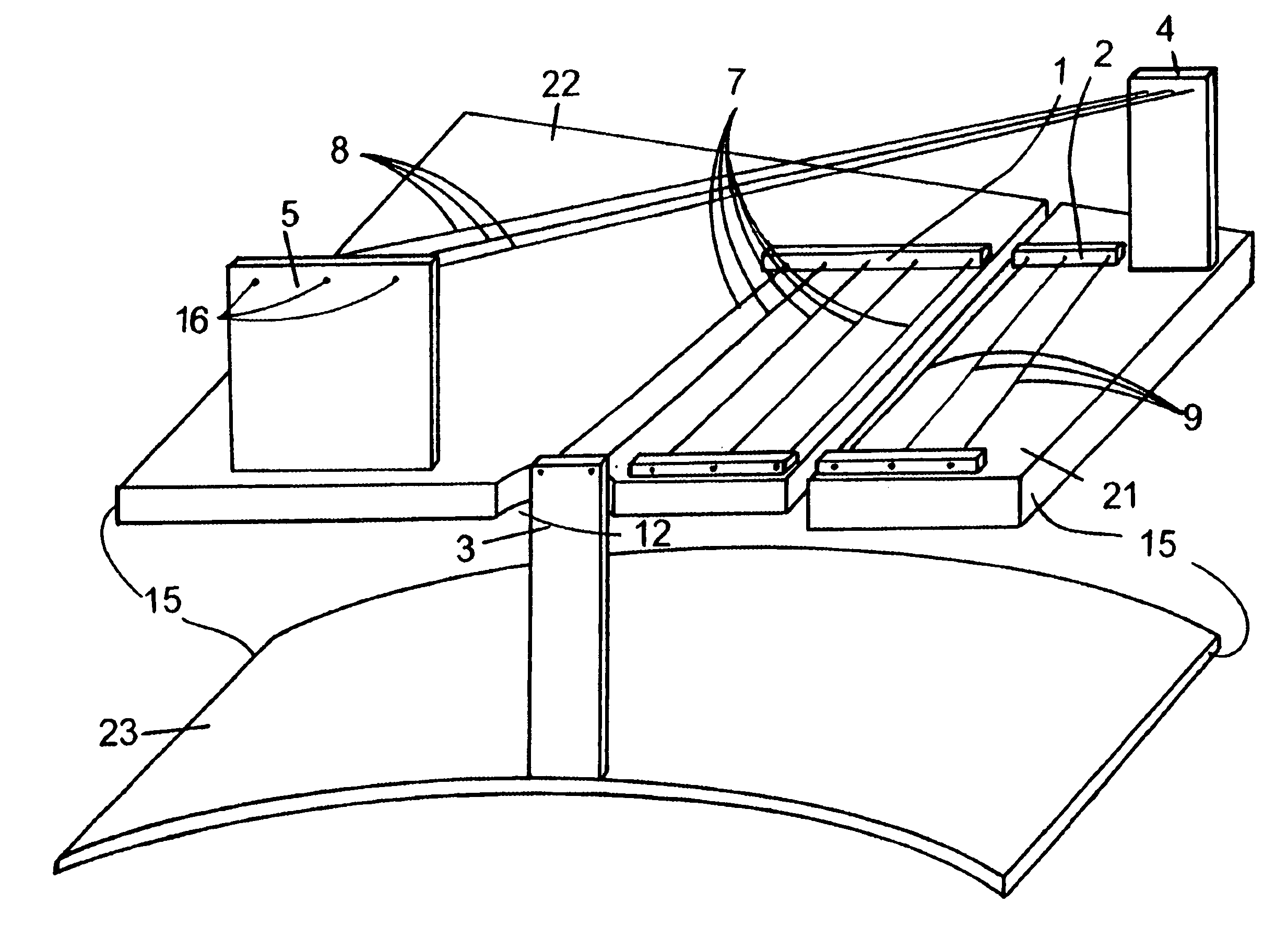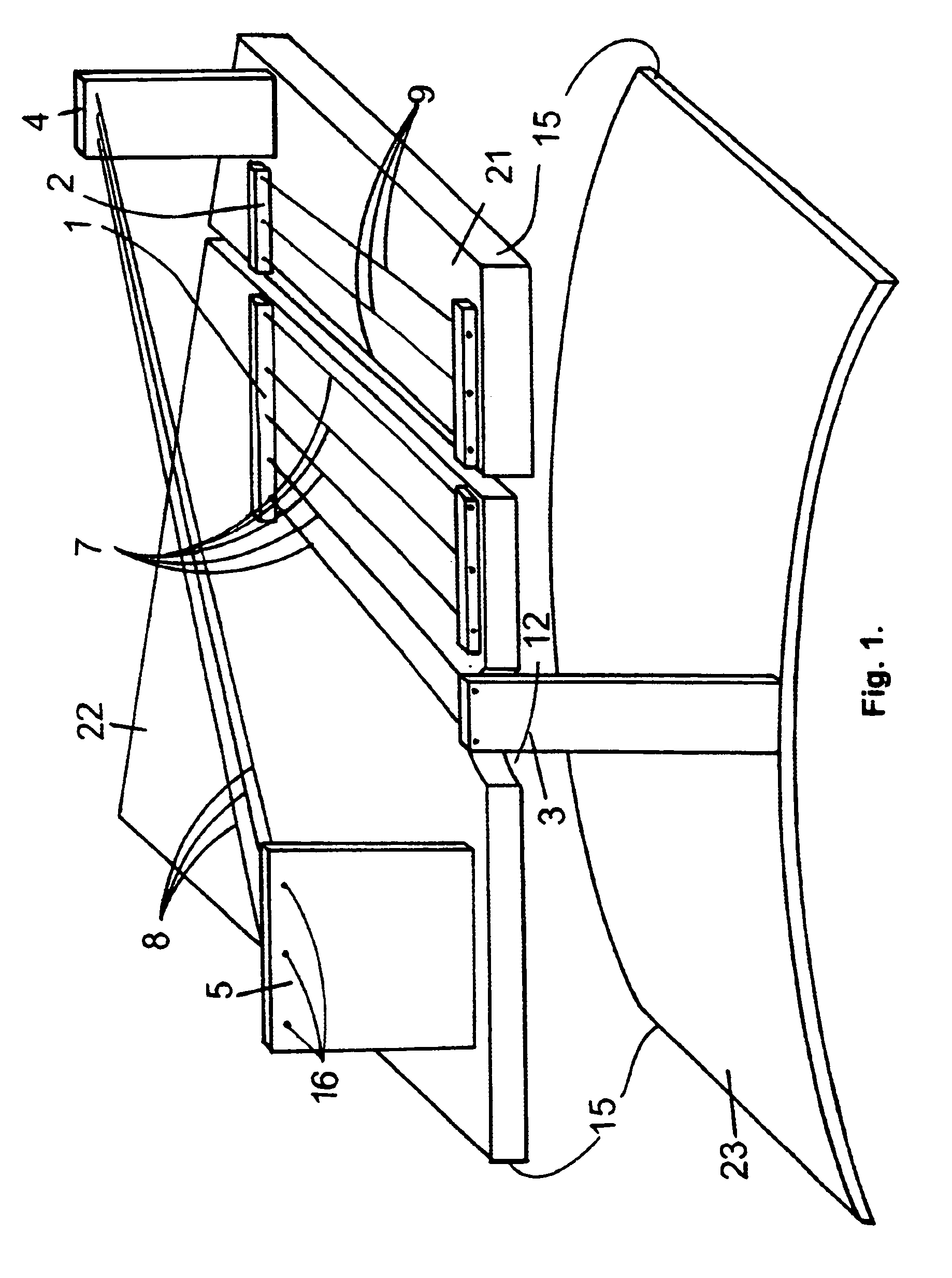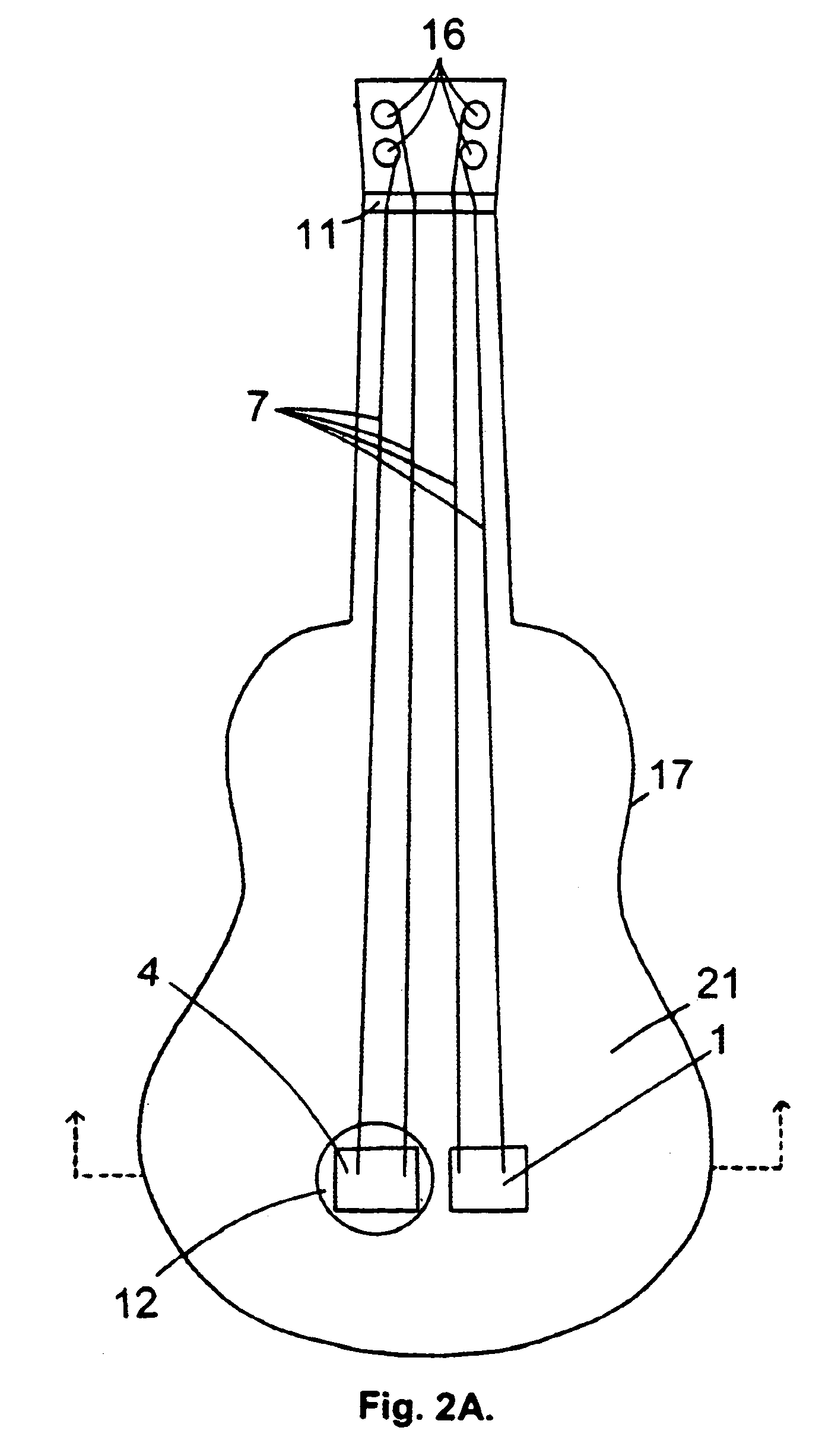Stringed musical instrument with multiple bridge-soundboard units
a musical instrument and soundboard technology, applied in the field of stringed instruments, can solve the problems of limited sound projection ability of many instruments, limited instrument life, etc., and achieve the effects of increasing the size of the soundboard, increasing the mass, and increasing the velocity of strik
- Summary
- Abstract
- Description
- Claims
- Application Information
AI Technical Summary
Benefits of technology
Problems solved by technology
Method used
Image
Examples
Embodiment Construction
[0002]1. Field of the Invention
[0003]The present invention is within the field of acoustic stringed instrument making
[0004]2. Description of the Prior Art
[0005]Makers of stringed instruments have constantly sought to improve their instruments in a variety of dimensions, including pitch stability, acoustical quality, ability to sustain notes, volume of tones generated, and durability of the instrument.
[0006]Refinements in the construction of the instrument have led to the birth of new generations of instruments, each with some improvements in the qualities listed above. For example, better bracing systems, in part, allowed the development of the pianoforte from its predecessors, and the steel-string guitar from gut string instruments. These instruments project more volume, stay in tune more reliably, and last longer. Such changes allowed the instruments to assume different roles in ensembles, in essence to become different instruments. Bracing, shaping and carving of soundboards has ...
PUM
 Login to View More
Login to View More Abstract
Description
Claims
Application Information
 Login to View More
Login to View More - R&D
- Intellectual Property
- Life Sciences
- Materials
- Tech Scout
- Unparalleled Data Quality
- Higher Quality Content
- 60% Fewer Hallucinations
Browse by: Latest US Patents, China's latest patents, Technical Efficacy Thesaurus, Application Domain, Technology Topic, Popular Technical Reports.
© 2025 PatSnap. All rights reserved.Legal|Privacy policy|Modern Slavery Act Transparency Statement|Sitemap|About US| Contact US: help@patsnap.com



